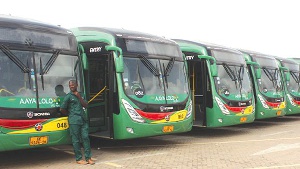The economy’s recent descent into recession has piled pressure on the government to throw a lifeline to businesses constrained by Eskom’s load shedding.
Moody’s has forecast GDP growth of 0.7% in 2020, down from a previous forecast of 1.5% growth, partly due to the negative impact of widespread power cuts on the manufacturing and mining sectors.
The current onset of the COVID-19 pandemic, is a further shock that the economy will have to overcome. So, what is the government doing to plot a way out of the energy crisis throttling economic growth?
“Since the beginning of the year, President Cyril Ramaphosa’s administration has sent strong signals that the country is entering a ‘new era’ of energy generation — a shift that could potentially boost the position of renewable energy producers,” says Niveshen Govender, COO of the South African Photovoltaic Industry Association (SAPVIA).
“From what we have heard the president announce in his State of the Nation Address in February, the government is trying to significantly and rapidly increase generation capacity outside of Eskom,” adds Govender.
For instance, Govender says, the state is implementing measures that will enable municipalities in good financial standing to procure electricity from independent power producers (IPPs).
The mining industry is also getting a major concession, following months of lobbying. Mines have been granted permission by the state to generate energy for their own use without going through the cumbersome process of applying for a license. To date, there have been administrative and regulatory barriers preventing mining companies from generating power for self-consumption, so this decision is a welcome shift in policy for the sector.
“Mining companies now have several options: they could partner with IPPs behind the meter (producing power on-site) or they could contract with IPPs remotely from their operations and wheel across the grid,” Govender explains.
South Africa’s electricity-intensive mining industry directly contributes more than 7% to the economy, and it overwhelmingly sustains the world’s platinum production. The industry struck a deal with Eskom in 2010 to reduce its power usage by between 15% and 20%, whenever the grid was under severe pressure. Although this agreement has allowed mines to continue operating, companies are worried that Eskom’s capacity deficiencies pose a long-term risk to the industry.
“Despite the government’s announcement that deviations from requiring a license will apply, we expect that mining companies will still have to register their projects with the National Energy Regulator of South Africa (NERSA), and we simply don’t know how efficient this process will be,” says Govender
“What we do know is that businesses in other sectors of the economy can expect their applications for self-generation above 1 megawatt (MW) to be processed by the regulator within 120 days,” Govender points out.
Mines in various parts of the world are making use of renewable energy sources — such as wind, solar, hydropower and biodiesel — to power different parts of their operations. The affordability and sustainability of solar photovoltaic (PV) systems has made them a popular choice, which is why Harmony Gold plans to build a 30 MW solar power plant in the Free State.
Amplats is also trying to get a 100 MW solar power plant going at its Mogalakwena mine. Typically, solar systems have a 20-year lifespan, although the efficiency of panels nowadays means that plants can have an economic life of up to 35 years.
“Depending on a mine’s operational requirements and its location, a hybrid energy solution that utilises solar, wind and battery storage might be the most suitable option for a facility generating power for self-consumption,” says Govender.
The local mining industry can look to overseas examples of how renewable energy is being utilised in different ways. In Chile, Anglo American has launched a pilot solar PV plant built over a tailings pond at one of its copper mines.
The project, which is the first of its kind, includes 256 PV panels with the capacity to generate 86 kilowatts (kW). Last year, Gold Fields announced plans to operate a gold mine in Western Australia predominantly using renewable energy. The Agnew mine will be powered by a microgrid incorporating solar PV, wind, battery storage and gas.
“At the end of the day, the introduction of alternative sources of electricity is bound to threaten Eskom’s monopoly in the energy production and distribution market, but it will only force the state-run power utility to become more efficient and competitive,” says Govender.
“We hope the touted ‘new era’ in energy generation includes a sustainable mix of renewable sources without the burdensome red tape that can stymie progress,” Govender concludes.
Africa Business News of Monday, 6 April 2020
Source: HWB













